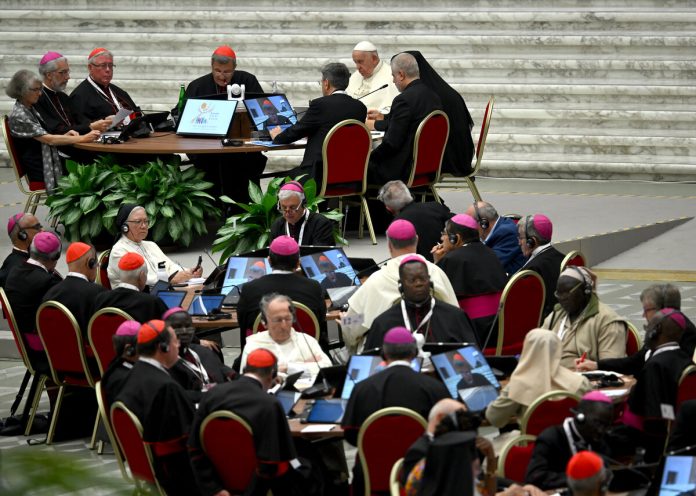As the Synod of Bishops on Synodality is underway, there are a lot of expectations about what the Synod should accomplish.
Many progressive Catholics are hoping that the synod will discuss and embrace the liberal agenda: homosexual union, female ecclesial leadership and ordination, married clergy, eucharistic communion for divorced, etc.
The conservative and traditionalist Catholics on the other hand are alarmed if this happens, fearing that this could lead to schism.
These hot-button issues and how they are being addressed is what the mass media as well as social media are obsessed with in their reporting.
We are constantly reminded that this is not Vatican III but rather the implementation of the reforms of Vatican II.
So, we should not expect the Synod to decide on these issues. A Synod of Bishops is not an ecclesial legislative body.
Progressive Catholics will be disappointed by the outcome of this synod since the Synod will not decide in favor of their advocacies.
The conservatives will gloat that the status quo remains. What could be surprising to all is that this Synod can lead to real changes they have not been expecting.
The theme of the Synod is Synodality with the sub-theme: communion, participation, and mission. This means that what the Synod aims to do is to make synodality an integral part of the Church’s way of life – that is as an organizational culture and not just structure.
Organizational culture is very important in the field of management. This refers to the culture of a group, organization, institution, society, or community.
It is associated with the group’s shared beliefs, values, way of life, the way of thinking and behaving, the way of proceeding.
It is associated with how members are expected to relate or interact with one another and how leadership is exercised.
It prescribes what is right and wrong, appropriate and inappropriate. An organizational structure without a corresponding organizational culture would be empty.
The vision and mission of an organization require a corresponding organizational culture and structure.
Vatican II adopted the vision of the Church as Communion and People of God whose members actively participate in Christ’s prophetic, priestly, and kingly/servant mission.
This requires a structural and cultural change. Instead of a pyramidal, authoritarian, clergy-dominated culture where decisions are made from the top and the laity passively obeys, Vatican II ecclesiology demands a culture of communion and participation in the mission.
This means seeing the Church as a community of friends and disciples journeying together to fulfill its mission.
The members share with one another their spiritual and material resources and gifts. Leadership and authority are exercised in a spirit of service.
Leaders do not act as lords or despots but as servant-leaders close to their members, listening to them, and inspiring them to actively participate in the life and mission of the Church.
All the members – women and men, young and old, rich and poor, straight and LGBT – are treated with equal dignity. Everyone is called to work together to promote peace, justice, and the integrity of creation – to hear the cry of the poor and the cry of the earth.
The poor are not discriminated against but welcomed, loved, and cared for. This ecclesial culture which is inclusive, participative, and mission-oriented is at the heart of synodality. This is what the synodal path or culture is all about.
A change in organizational culture can be initiated from the top but it must be owned and implemented from below – at the grassroots. Leaders must be the first to model the new organizational culture.
Members are expected to follow them. It takes time for the organizational culture to change and be adopted. There will be resistance, especially from those who are used to the dominant pre-Vatican II organizational culture.
The process leading to the synod and during the synod itself has adopted this synodal path. This was the first time that there was consultation at all levels of the Church – down to the parishes and even Basic Ecclesial Communities.
This is the first time that lay people – especially women – are part of the Synod and given voting rights. The challenge is how to sustain and widen this synodality after the synod and embrace it as an essential part of the organizational culture.
This requires corresponding structures that are operational. It is at the level of the local Church – whether within a country, in each diocese, parish, or Basic Ecclesial Communities – that the synodal culture becomes a reality.
This is the only way for the reforms and spirit of Vatican II which started 60 years ago to be fully received and implemented. The journey towards a new way of being Church continues.
Fr. Amado Picardal is a Redemptorist priest and human rights and peace advocate. He was executive secretary of the CBCP Episcopal Committee on Basic Ecclesial Communities. He also served as co-executive secretary of the Commission of Justice, Peace, and Integrity of Creation of the Union of Superiors General in Rome.









